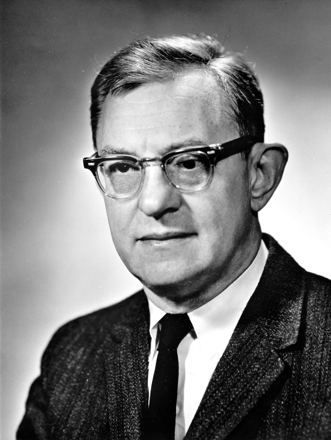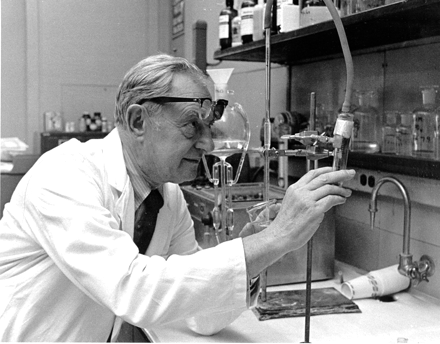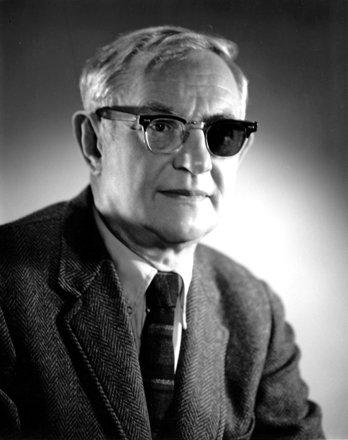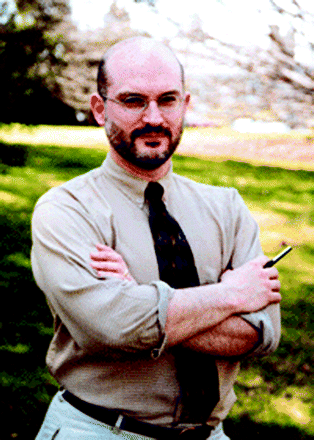Honoring Julius Axelrod
- Harry B. Smith, PhD
At the end of this month, the American Society for Pharmacology and Experimental Therapeutics will bestow, at Experimental Biology 2007, the Julius Axelrod Award in Pharmacology. Although the Award has been an annual event within the Catecholamine Club (www.catechol-amineclub.org) since 1991, this year will mark its expansion under the auspices of ASPET.
Having passed away little more than two years ago, at the age of ninety-two, Julius Axelrod was active during the professional lives of many of the pharmacologists who will be on site for ASPET’s inauguration of the Award. He contributed broadly across the spectrum of biomedical research (perhaps as only a pharmacologist can). As researcher and mentor, Axelrod’s work informed the development of virtually all biomedical scientists who received their training in the last fifty years.
Even among the lay public, the concepts that came from Axelrod’s work have become common knowledge (Who has not heard of Tylenol or Prozac?), although the name of the Nobel Prize–winning researcher may be unfamiliar. In the biomedical community, the name Julius Axelrod connotes not only a famous knack for approaching the right question at the right time with the right tools, but also a talent for attracting keen young minds to his lab and marking them with a certain enthusiasm and aplomb for research. The number and caliber of the scientists that arose from Axelrod’s tutelage are extensive. The story of this “dynasty,” beginning with Axelrod’s mentor Bernard Brodie (whose name also is borne by an ASPET award), has been compellingly told in Robert Kanigel’s Apprentice to Genius (1).
Julius Axelrod was born a basket maker’s son in the Lower East Side of New York, in 1912 (i.e., less than four years after the founding of ASPET). He has written that he did less than spectacularly in the public schools of his Jewish working-class neighborhood, but that his real childhood education arose from his voracious reading at the library located near his home. At tuition-free City College of New York, where he graduated in 1933, he majored in biology and chemistry, although he performed better in the humanities. He worked to support his way through college and did most of his studying on the subway, a practical necessity that endowed him with “considerable powers of concentration” (2). There is a sense of whimsy, rather than real complaint, as Axelrod writes about his youth, but the overriding message—that one need conform neither to the expectations nor to the limitations imposed by one’s environment—is distinctively recounted in his reminiscences (2–4).
In many respects, Axelrod’s appraisal of himself as a “late-blooming” scientist (2), however modest, can be taken as merely accurate. He had hoped to study medicine but was not accepted at any of the several medical schools to which he applied, certainly facing the quotas for Jewish students that were in effect at the time. He consequently felt happy to find employment, especially in the midst of the Great Depression, first as a laboratory assistant and then as a chemist for the New York City Department of Health’s Laboratory of Industrial Hygiene, where he devised assay protocols to assess the vitamin contents of processed foods. He remained in the health department for over eleven years, although he did obtain a master’s degree in chemistry by attending night school. He appears to have been happy in the position, but he did not consider himself a researcher. He was not to experience his “first taste of real research” until he was well into his thirties (2), after he had moved to New York University to become Brodie’s laboratory assistant. At the time he entered Brodie’s lab, in 1946, there may have seemed nothing “late-blooming” about Axelrod’s career as a laboratory technician, but viewing the Nobelist’s curriculum vitae in retrospect, the term is all but overstated.

The description he gives to his career as an unexpected life in research (2, 3), on the other hand, probably speaks more about Axelrod’s temperament and character. He was delighted with the change his career took when, in 1946, at the age of thirty-four, he was urged by his superior at the Laboratory of Industrial Hygiene [past ASPET president (1930–1931) George B. Wallace] to consult with Brodie about the metabolic problems (i.e., methemoglobinemia) of patients who were using the then popular analgesics acetanilide and phenacetin. That first meeting lasted hours, during which he was invited to move into Brodie’s laboratory to help elaborate the metabolic fate of acetanilide and phenacetin. Axelrod has referred to that first encounter with Brodie as the “fateful” beginning of an extraordinarily successful “second act” to his life. But perhaps most telling is the apparent wonder he expresses at the sheer good luck that propelled him from routine laboratory work (though certainly demanding) into the world of “research”—a marvelous fate that somehow befell him, with his commonplace career!
But Axelrod’s love for discovery and science—factors that undoubtedly led to the relationship with Brodie in the first place—were far from commonplace. Throwing himself into the new analgesic research, Axelrod ingested acetanilide and subsequently identified aniline in his urine—“one of the most exhilarating experiences of [his] life” (3). Brodie and Axelrod described the metabolism of acetanilide and phenacetin in ASPET’s The Journal of Pharmacology and Experimental Therapeutics in 1948, Axelrod’s very first publication. In addition to pinpointing the basis for the methemoglobinemia caused by the two analgesics, the report suggested that N-acetyl-p-aminophenol (now known as Tylenol) just might prove to be a better-tolerated and effective drug.

His unassuming nature, according to colleagues, friends, and family, stayed with Axelrod throughout his life. It is nevertheless clear that Axelrod’s devotion to science entailed, if not an element of ambition, a desire to pursue research independently. His move to the National Heart Institute in 1950 was partly motivated by this desire, although he would continue for a while to remain subordinate to Brodie, who also joined the NIH at that time. A few years thereafter, more aggressively pursuing independence, he finally decided to obtain his PhD, and did so at the age of forty-two, in 1955, after a single year’s time, from George Washington University. Prior to that time, he had been too devoted to his research to allow himself to be distracted with mere doctoral work: He had greatly advanced the physiological understanding of caffeine; he had begun his ground-breaking work on the sympathomimetic amines and their metabolism; and he had “independently described the microsomal enzymes and their role in drug metabolism.”a Despite these significant achievements, Axelrod could not attain a commensurate high rank at the NIH at the time without a doctorate. He cites ASPET as a unique instance of recognition of his scientific accomplishments: “Because of my work on analgesics and caffeine, I was delighted to be elected without a doctorate as a member of the American Society of Pharmacology and Experimental Therapeutics in 1953” (2). Axelrod remained an ASPET member for the following fifty years.
With his PhD formalized, Axelrod became Chief of the Section on Pharmacology at the new Laboratory of Clinical Science of the National Institute of Mental Health, where he greatly influenced the developing field of “neuroscience.” There he described the versatility of methylation reactions in neuropsychiatric contexts and identified multiple enzymes, notably catechol-O-methyltransferase, as key pharmacological targets. He reported the non-enzymatic termination of neurotransmission and elucidated mechanisms of neurotransmitter reuptake, remarkably foreseeing the potential utility of reuptake inhibitors for psychiatric disorders. In consideration of his assignment to the NIMH, he decided to explore the previously underappreciated pineal gland, and established the rhythmicity of enzyme expression and function in supporting the brain’s circadian clock. For his work in discovering mechanisms of neurotransmission, he received the Nobel Prize, in 1970. Typically self-effacing, Axelrod stated to the Washington Post, “…I think there are 100 equally deserving people…I happened to be fortunate to be there at the right time.”

Axelrod’s modesty, commitment to pharmacology throughout his career, fifty-year membership and service to ASPET, and his fostering of many trainees who are now prominent scientists and ASPET members, are all characteristics that make the ASPET Axelrod Award a remarkably fitting tribute to this wonderful man. The Society for Neuroscience will also be giving an award in Axelrod’s name, which is similarly fitting, given the impact of his research on that field. But perhaps the most fitting tribute to Julius Axelrod, known as Julie to all who worked with him and knew him, is the remarkable esteem held for him by all those who came out of his laboratory. Richard Weinshilboum, now at the Mayo Clinic, was a Research Fellow in Axelrod’s lab when the Nobel Prize was announced. Weinshilboum recalls a telegram from Sol Snyder, now at Johns Hopkins, at the time of the Nobel announcement (5). Summing up the sentiments of the “Axelrod alumni,” Snyder made the case that a second Nobel Prize should come to Axelrod for his accomplishments as a mentor of young scientists. In agreement with this sentiment, ASPET fervently hopes that the Julius Axelrod Award in Pharmacology will perpetuate the esteem for this mentor, this steward of pharmacology, and this groundbreaking analyst of the wonders of the body in its relationship to small bioactive molecules.b
Julie’s Philosophy on Research*.
Footnotes
-
↵a The quotation comes from Axelrod himself (2). For an account of Axelrod’s stand regarding the independence he took in the discovery of the microsomal P450 enzymes, see Kanigel (1).
-
↵b The Julius Axelrod Award for 2007 will be conferred at EB 2007 in the Washington DC Convention Center (Ballroom A) on Saturday, April 28, 7:00 p.m. at the ASPET Business Meeting. This year’s Award goes to Tong H. Joh of the Weill College of Medicine of Cornell University.
- © American Society for Pharmacology and Experimental Theraputics 2007
References

Harry B. Smith, PhD, is Editor of Molecular Interventions.



